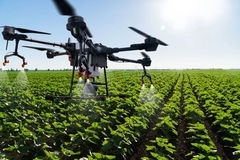New European Guidance for Novel Food
11 Nov 2016 --- The European Food Safety Authority has issued further guidance concerning novel and traditional food from third countries in a bid to make sure they are safe before risk managers decide whether or not they can be marketed in Europe.
As part of the new European regulation on novel food in November 2015, EFSA was tasked with developing new guidance for foods classified as “novel” which means food that EU citizens have not readily consumed to a large extent prior to 1997. It includes food from new sources like oil rich omega-3 fatty acids from krill, and food obtained from new technologies such as nanotechnology or using new substances like phytosterols or plant sterols.

In terms of the classification of traditional food, this is a subset of novel food and relates to food traditionally consumed outside of Europe like foods from plants, microorganisms, fungi, algae and animals. Examples include chia seeds, baobab fruit, insects and water chestnuts.
The new guidance explains the kind of information applicants need to provide for risk assessment and clarifies how to present it before EFSA can assess the safety of the novel or traditional food. It says dossiers need to include data on the compositional, nutritional, toxicological and allergenic properties of the novel food and information relating to production processes and proposed us levels.
Prior to developing the guidance, EFSA held a two-month public consultation and worked closely with stakeholders. Applicants need to present evidence of safe use of the traditional food in at least one country outside of the EU for a period of at least 25 years. EFSA and member states will assess the evidence in parallel procedures.













